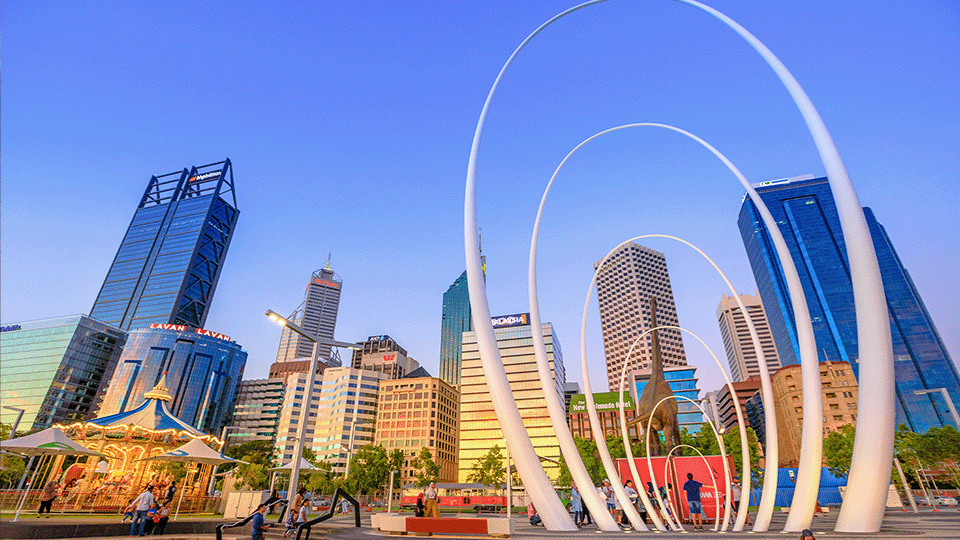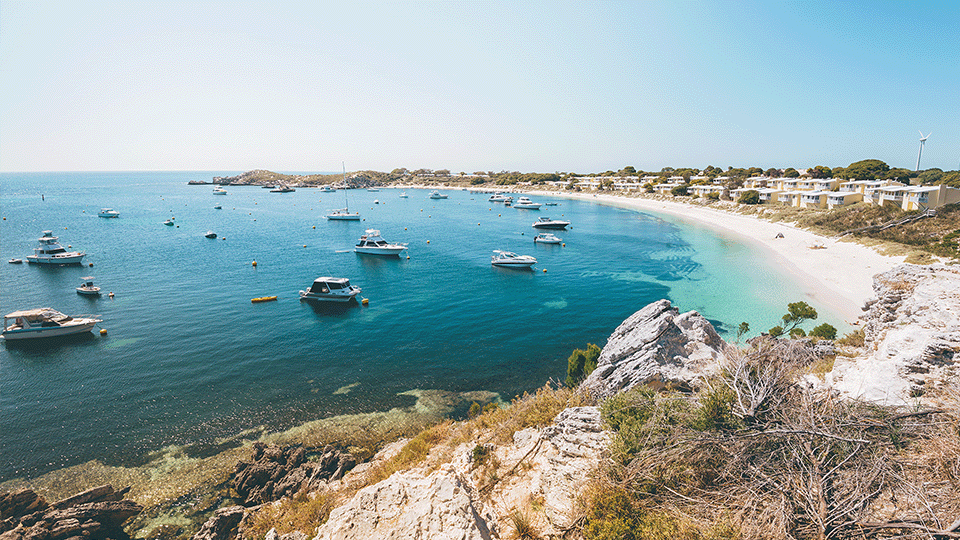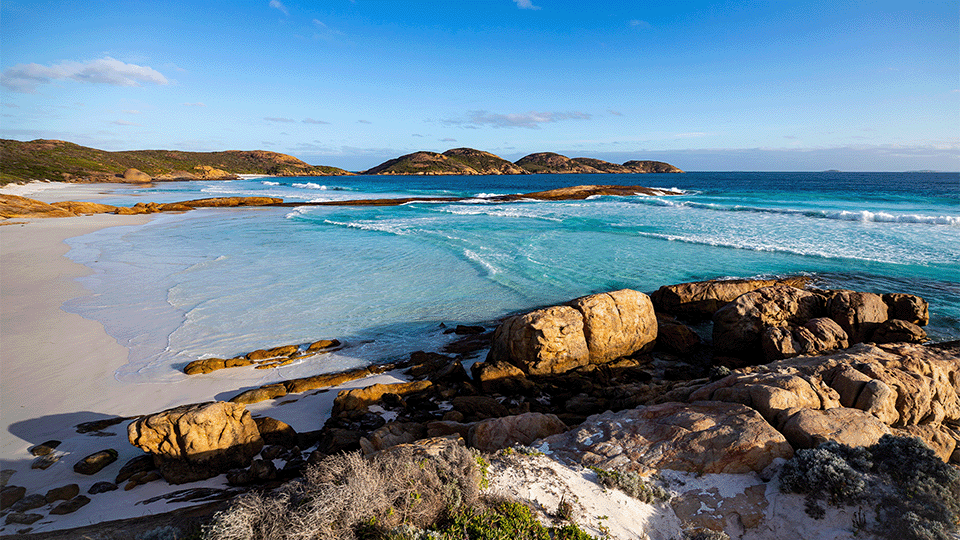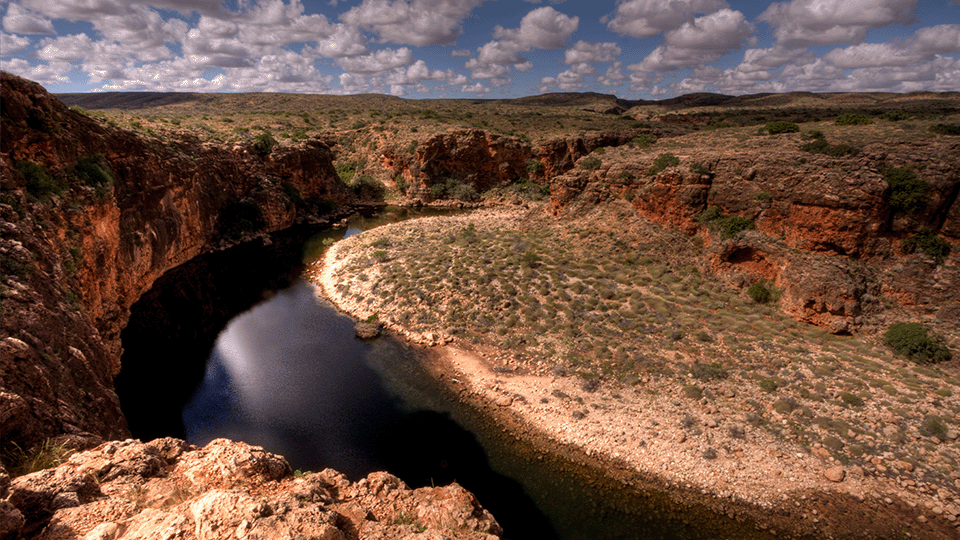Browse other blog categories
Ultimate Guide To Western Australia
Getting to Western Australia
If you’re travelling directly to Western Australia, you’ll probably be flying into Perth, which services a number of international and domestic airlines. This includes direct flights from London, the Middle East, Johannesburg, New Zealand and Asia, as well as regular domestic flights from Sydney, Melbourne, Brisbane, Canberra, Adelaide and Darwin.
The Best Times to Visit Western Australia
Western Australia is, quite literally, a third of the entire country, so the weather can vary massively depending on where exactly you are. On the plus side, this means that there is probably always some sun somewhere – but, of course, the summer season between December and February will offer the highest temperatures across the board. Autumn (March to May) could be a better option if you’re more into outdoor activities, since it has warm, sunny days with little chance of rain.
Things to See and Do in Western Australia
The Capital

When visiting Western Australia, your first stop will be the state capital, Perth. This metropolis has a whole host of things to do and being situated on the coast, it has a host of the kind of beautiful beaches that Australia is known for. The most notable is Cottesloe Beach, which has a kilometre of pristine white sand and is perfect for any watersport – no wonder it’s been a favourite of locals and tourists for more than a century!
If you want to escape the heat and the beach, Kings Park offers a 400-hectare retreat in the centre of the city. A unique blend of bushland, parkland and a botanic garden to boot, the park remains one of the city’s must-see spots, and with picnic areas, barbecue facilities, public bathrooms and playgrounds, you can easily lose an afternoon in the green oasis.
Another top spot to visit when in Perth is Rottnest Island, which has shot to fame in recent years thanks to one thing: the quokka. Or, to be more precise, the quokka selfie (don’t pretend you haven’t seen one, or thought about getting one yourself!). These little furry creatures run about the island thanks to the complete lack of cars, which also means the best way to get about is by bike (although a shuttle is also available for those who prefer not to pedal, not to mention a range of other tour services, reaching the more remote parts of the island). Beyond the friendly fauna, Rottnest Island also has 63 beaches, 20 bays and numerous reefs and wrecks.

Rottnest is just 19 kilometres off the coast, with ferries departing regularly from Fremantle, which is a destination in its own right. A close neighbour of Perth and part of the Perth metropolitan area, this harbour city offers a look at Australia’s past along with a bustling nightlife, cosy cafes and world-class markets. Having run for over a century, the Fremantle Markets offer everything from fresh seafood to vegan ice cream, all to the soundtrack of local buskers.
The South

Head south from Perth and the land grows progressively more luscious and laden with grapes, until you reach the region around Margaret River, famed for its wine and spectacular scenery. This is the place to enjoy a local bottle while keeping an eye out for the wildlife in this biodiversity hotspot (one of only 36 such hotspots in the world). If you’re seeking a truly unique natural experience, then head to Hamelin Bay, where you can wade into the water to spend time with the stingrays. Don’t worry – despite their bad rep, these gentle giants are generally very docile!
If you’re looking for flora over fauna, then head to Walpole for the Valley of the Giants Tree Top Walk, a 600-metre walkway through the forest canopy. While in the south, you should also take the time to swing by the towns of Albany and Esperance, which both offer phenomenal beaches and interesting wildlife (and, in the case of Esperance, an occasionally pink lake!).
The North

Head north rather than south and you will quickly encounter Lancelin, home to sweeping sand dunes and the other-worldly Pinnacles Desert in Nambung National Park, where a series of limestone formations jut out from the ground.
Further north and you reach Kalbarri National Park, home to a diverse range of wildlife and natural scenery, including Nature’s Window, one of the most iconic natural formations in the country. The park’s expansive bush, undulating gorges and flowing rivers also offer the perfect spot for a whole variety of adventure activities. Another nature hotspot, about 400 kilometres north of the park, is Monkey Mia Reserve, where you can watch (and interact) with wild bottlenose dolphins.
Make a stopover at either Exmouth or Coral Bay, both of which offer the perfect platform from which to explore Ningaloo Marine Park, home to stunning coral reefs, diverse marine life and migrating whale sharks. If you stay in Exmouth, it has the added bonus of being almost slap-bang in the middle of Cape Range National Park, where you can enjoy stunning natural scenery and local wildlife like kangaroos. Another natural wonder that shouldn’t be missed is Karijini National Park, which is the second largest park in the state and home to gorges, waterfalls and spring-fed pools, perfect for taking a dip.
Your final stop can be Broome, aka the pearling capital of Australia. This town is famed for the sunsets of Cable Beach, the melting pot of cultures and, of course, its pearls. So whether you want to lounge on the stretches of perfectly white beach, or explore foodie gems in the old streets, you’re sure to find something to do in this historical town.
Western Australia offers some of the most spectacular natural scenery in the entire country, along with cosmopolitan hotspots to soak in art and culture. Explore as much as you can and tailor a trip perfect to what you want to see with this ultimate guide to Western Australia.
Categories:
- City Experiences
- Articles of Interest
- Essential Info
- Cultural Experiences
- Adventure Travel
- Things to Do
Published on: 17 Feb 2023, Written by: Maddy Burley